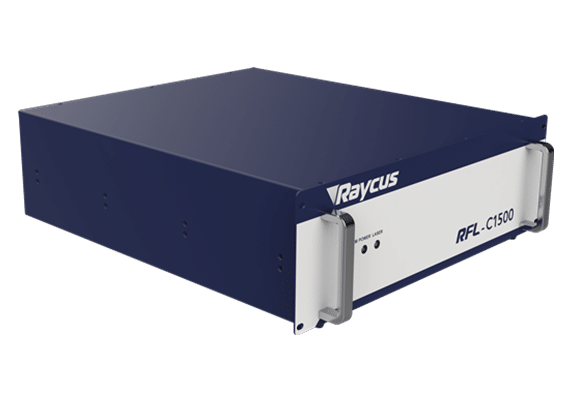
Using a well-known brand laser generator (Raycus, JPT, Max, IPG), the pulse width and frequency are independently adjustable and can maintain a stable peak power output, suitable for a wider range of cleaning scenarios. The high photoelectric conversion rate ensures the laser power and makes the cleaning effect better. Acctek Laser can design different configurations to meet customer needs.
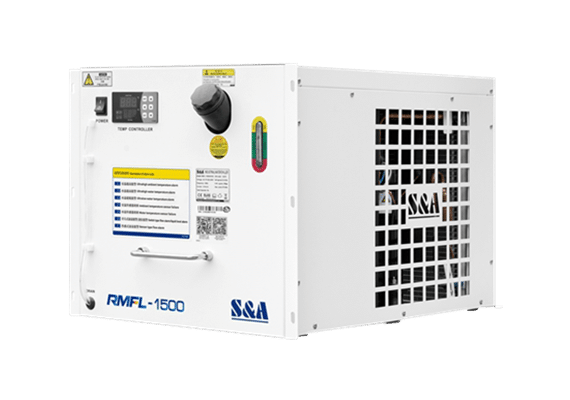
The industrial water cooler ensures the heat dissipation of the core optical path components, allowing the welding machine to provide consistent welding quality and helping to improve the overall quality of the clean itself. It can also increase welding output by reducing the downtime of fiber laser cleaning machines. In addition, an excellent industrial water cooler can also prolong the service life of the laser cleaning machine.
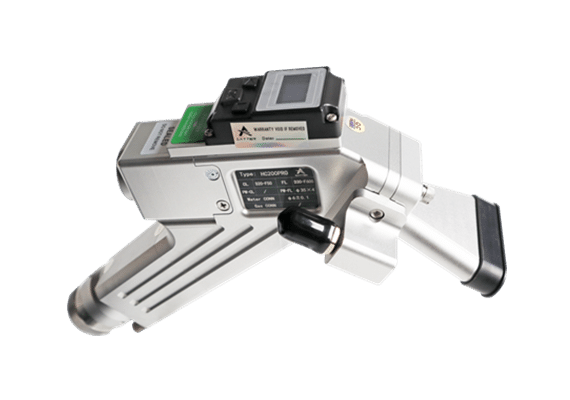
The laser cleaning head is ergonomically designed, small in size, comfortable to hold, and easy to control and operate. The hand-held cleaning head is easy to hold can be used for a long time, and can be operated at any angle, making cleaning more convenient and flexible.
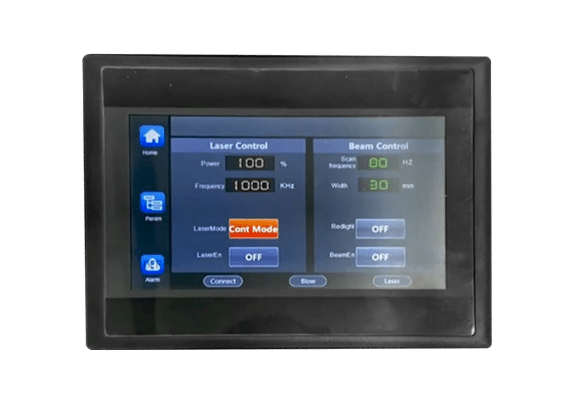
Acctek Laser provides high-performance, intuitive, and easy-to-use operating systems. You can quickly set cleaning power, width, and other parameters through the screen, and provide a better cleaning effect. The operating system supports Chinese, English, Korean, Russian, Vietnamese, and other languages.
| Model | AKQ-100 | AKQ-200 | AKQ-300 | AKQ-500 | AKQ-1000 | AKQ-1500 | AKQ-2000 |
| Laser Power | 100W | 200W | 300W | 500W | 1000W | 1500W | 2000W |
| Laser Type | Fiber Laser | ||||||
| Pulse Formation | Q-Switched (Quality Factor) | ||||||
| Laser Generator | JPT | ||||||
| Output Range (If Adjustable) | 0-100% | ||||||
| Cleaning Efficiency | 12㎡/h | ||||||
| Cleaning Area | 100*100mm,130mm*130mm, 150*150mm, 180*180mm, 290*290mm | ||||||
| Fiber Length | 3M | 5M | 5M | 10M | 10M | 10M | 10M |
| Expected Focal Distance | 160mm | ||||||
| Cooling Type | Air Cooling | Air Cooling | Air Cooling | Water Cooling | Water Cooling | Water Cooling | Water Cooling |
| Comparison | Laser Cleaning | Chemical Cleaning | Mechanical Grinding | Dry Ice Cleaning |
|---|---|---|---|---|
| Washing Method | Non-Contact Cleaning | Contact Cleaning | Abrasive Contact Cleaning | Non-Contact Cleaning |
| Harm To Base Material | None | Yes | Yes | None |
| Washing Efficiency | High | Low | Low | Mid |
| Consumable | Power | Chemical Detergent | Abrasive Paper, Grinder, Abrasive Stone | Dry Ice |
| Washing Result | Very Good, Very Clear | Medium, Uneven | Medium, Uneven | Good, Uneven |
| Precision Washing | Accuracy Controllable, High Precision | Uncontrollable, Low-Precision | Uncontrollable, Medium-Precision | -Uncontrollable, Poor Precision |
| Safety/Environment | No Pollution | Chemical Pollution | Dust Pollution | No Pollution |
| Operation | Easy to operate, portable, or automation optional | Complicated processes, higher technical requirements of the operator, and Pollution prevention measures are required | With more time & manpower, pollution prevention measures are required | Easy to operate, portable, or automatic |
| Investment | High investment in machines, but no consumable, low maintenance cost | Low investment in machines, but expensive consumables | Medium investment in the machine, high manpower cost | Medium investment in the machine, high consumable cost |
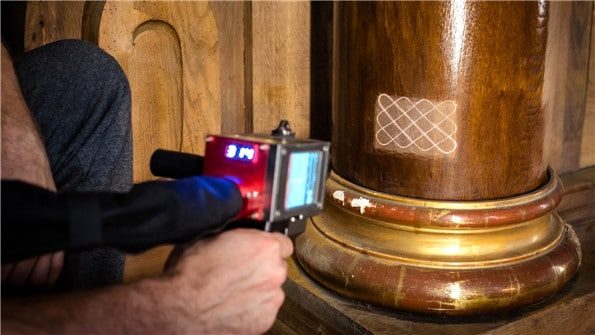
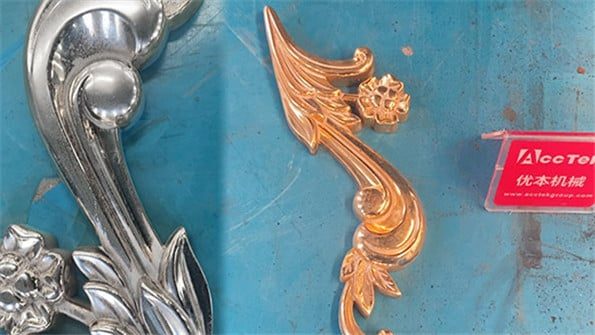
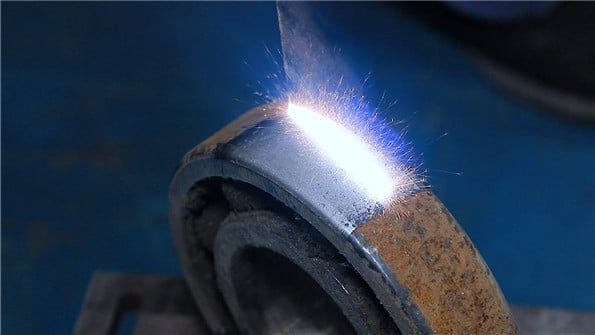

The cost of a 100W pulse laser cleaning machine can vary based on several factors, including make, model, features, and seller location. On average, a standard model 100W pulse laser cleaning machine will cost around $4,900 to $6,000. However, prices can vary widely depending on the manufacturer and the specific features included. Some models with added features like automatic scanning, control systems, and advanced security features may cost more.
Additionally, other factors such as the seller’s location and shipping and installation costs can affect the final price. Machines sold in countries with lower labor and manufacturing costs may be cheaper than those sold in countries with higher costs. It is imperative to research different makes and models and compare prices from different sellers to get the best value for your investment. Also, it is important to make sure that the machine meets your specific needs and requirements before purchasing.
It is important to note that while the upfront cost of a 100w pulse laser cleaning machine may be higher than other cleaning methods, it is a worthwhile investment for industries that require precise and efficient cleaning. It can help increase productivity, reduce labor costs, and extend the life of equipment, ultimately saving money in the long run.
Maintenance and operating costs for a 100w pulse laser cleaning machine will vary based on several factors, such as frequency of use, type of contaminants removed, and the manufacturer’s maintenance recommendations. Here are some key factors that can affect maintenance and operating costs:
Overall, maintenance and operating costs for a 100w pulse laser cleaning machine can range from a few hundred to a few thousand dollars per year, depending on the factors listed above. Follow the manufacturer’s recommended maintenance schedule and keep accurate records of all maintenance activities to ensure the longevity and efficiency of your machine. It’s important to factor in these costs when considering purchasing a laser cleaning machine to ensure it’s a sustainable investment for your business.
The 100w pulse laser cleaning machine is a powerful tool that can clean a wide variety of materials including metals, plastics, ceramics, composites, and more. It works by using laser energy to vaporize or ablate the surface layer of a material, removing contaminants without damaging the underlying material. Here are some materials that a 100w pulse laser cleaning machine can clean:
It is important to note that laser cleaning may work differently on different materials, depending on the specific type of surface contamination and the wavelength of the laser. Some materials may require higher-power lasers or different cleaning parameters for best results. It is always recommended to test the laser cleaning process on a small area of the material before undertaking a large-scale cleaning operation. Additionally, proper safety measures and equipment should be used when operating a laser cleaning machine, including proper safety glasses and safety barriers.
The maximum cleaning area of a 100w pulse laser cleaning machine depends on several factors, such as laser beam size, scanning speed, and focal length. Generally, the maximum cleaning area of a 100w pulse laser cleaning machine is determined by the scanning system of the machine and the focal length of the laser lens.
The cleaning area of a laser cleaning machine is usually defined by the machine’s scanning system. The scanning system moves the laser beam across the surface to be cleaned, the speed and pattern of the scanning system affect the cleaning area. Some laser cleaners use a galvanometer-based scanning system that allows for high-speed scanning and covers a larger area. Other machines use a linear scanning system that moves the laser beam back and forth in a straight line, usually covering a smaller area.
The focal length of the laser lens also affects the cleaning area. Lenses with shorter focal lengths produce smaller spot sizes, allowing for more precise cleaning of smaller areas. In contrast, lenses with longer focal lengths can produce larger spot sizes, allowing larger areas to be cleaned but with less precision.
The standard cleaning area of the 100w pulse laser cleaning machine produced by AccTek Laser is 100mm x 100mm, and you can choose equipment with a maximum cleaning area of 130mm x 130mm. The size of the cleaning area affects the efficiency and productivity of the machine, as a larger cleaning area can clean more material in less time.
It should be noted that the maximum cleaning area of a laser cleaning machine depends on several factors, including scanning speed, spot size, and the type of material being cleaned. Different materials may require different laser parameters, which affect the size of the cleaned area.
The 100w pulse laser cleaning machine is a powerful cleaning tool that removes various contaminants from different types of surfaces. The laser beam generated by the machine is directed at the surface of the material to be cleaned, and the energy of the laser beam is absorbed by the pollutants on the surface, causing them to vaporize or ablate.
The effectiveness of a 100w pulse laser cleaning machine for removing contaminants depends on several factors, including the type of material being cleaned, the type of contaminant, and the laser parameters used. Generally speaking, a 100w pulse laser can be very effective in removing contaminants from various materials, such as rust, paint, oil, grease, and other organic and inorganic substances.
The laser cleaning process is non-contact and does not use any abrasive materials, making it a gentle and non-destructive cleaning method. The laser energy is focused on the surface of the material, removing only the surface layer, and leaving the underlying material intact. Therefore, laser cleaning is a gentle and non-destructive cleaning method, which is very suitable for cleaning delicate or sensitive materials, such as electronics, optics, and precision machinery.
The efficiency of a 100w pulse laser cleaning machine can be optimized by adjusting laser parameters such as pulse duration, repetition rate, and fluency. By adjusting these parameters, the laser cleaning process can be tailored and optimized for specific materials and contaminants.
In addition to the highly effective removal of contaminants, laser cleaning has several other advantages over traditional cleaning methods. These include reduced waste generation, improved safety, and increased efficiency, as laser cleaning can be automated and requires less labor than manual cleaning methods.
Overall, a 100w pulse laser cleaning machine is a very effective tool for removing contaminants from a wide variety of materials. The laser cleaning process is non-contact, non-destructive, and gentle, making it ideal for cleaning delicate or sensitive materials. Laser cleaning offers several advantages over traditional cleaning methods, including reduced waste generation, improved safety, and increased efficiency. The effectiveness of the laser cleaning process can be optimized by adjusting the laser parameters and providing a customized cleaning solution for a specific application.
The life expectancy of a 100w pulse laser cleaning machine depends on a variety of factors such as machine quality, frequency of use, maintenance schedule, and operating conditions. Generally speaking, the service life of the laser generator in a 100w pulse laser cleaning machine is usually about 10,000 to 20,000 hours.
Regular maintenance and proper use of a laser cleaning machine will help extend its lifespan. It is important to follow the manufacturer’s maintenance and cleaning guidelines, which include cleaning optical components, replacing worn parts, and monitoring laser output power. Additionally, the lifetime of the laser source can be extended by using proper laser parameters such as pulse duration and repetition rate and ensuring that the laser generator operates within its specified operating conditions.
In addition to the laser generator, other components in a laser cleaning machine, such as the scanning system, cooling system, and control electronics, can also affect the life expectancy of the machine. These components should be properly maintained and serviced according to the manufacturer’s recommendations to ensure optimum performance and longevity.
Frequency of use is another factor that affects the life expectancy of a laser cleaning machine. Heavy use and prolonged operation will increase the wear and tear on machine components, reducing its overall lifespan. Proper use and maintenance practices will help minimize wear and extend the life of your machine.
Regular maintenance is essential to prolong the life expectancy of your 100w pulse laser cleaning machine. Maintenance tasks may include cleaning optics, replacing worn or damaged parts, and ensuring that machines are operating within their specified operating conditions. A well-maintained laser cleaning machine will provide years of reliable operation, providing a cost-effective solution for industrial cleaning applications.
In summary, the life expectancy of a 100w pulse laser cleaning machine depends on a variety of factors such as machine quality, frequency of use, maintenance schedule, and operating conditions. With proper maintenance and use, a high-quality 100w pulse laser cleaning machine can have an expected life of several years or more, providing a reliable and cost-effective solution for cleaning applications.
The wavelength of the laser beam produced by a 100w pulse laser cleaning machine may vary by specific model and manufacturer. Generally speaking, however, most pulse laser cleaning machines use wavelengths in the 1064nm range, which is in the near-infrared range of the electromagnetic spectrum.
Pulse laser cleaning machines produce short pulses of laser beams, typically ranging in duration from a few nanoseconds to hundreds of nanoseconds. The pulse interval is relatively long, ranging from a few microseconds to a few milliseconds, depending on the design of the machine and the specific cleaning application. Short pulses of these high-intensity laser energies are very effective for removing contaminants from surfaces because they rapidly heat and vaporize the contaminant material, causing it to be expelled from the surface.
The 1064 nm wavelength used in pulse laser cleaning machines is ideal for cleaning applications due to its ability to penetrate and interact with a wide variety of materials, including metals, plastics, ceramics, and composites. This wavelength is also highly absorbed by most organic and inorganic pollutants, making it an effective tool for removing substances such as rust, paint, oil, grease, and other residues from a variety of surfaces.
In addition, some pulse laser cleaning machines can also produce laser beams of other wavelengths, such as 532nm or 355nm, through a process called frequency doubling or frequency tripling. These wavelengths are in the visible and UV ranges respectively and can provide additional benefits for specific cleaning applications. For example, a 532 nm wavelength is ideal for cleaning surfaces with organic contamination, while a 355 nm wavelength is effective at removing thin coatings and films.
To sum up, the wavelength of the laser beam produced by a 100w pulse laser cleaning machine is usually in the range of 1064 nm, which is highly absorptive to most materials and contaminants. Some machines can also generate laser beams at other wavelengths, providing additional benefits for specific cleaning applications. The use of pulse laser technology enables precise and efficient cleaning with minimal damage to underlying materials. The short bursts of high-intensity laser energy produced by the machine are very effective at removing surface contaminants, providing a fast and efficient cleaning solution.
The 100W pulse laser cleaning machine produced by AccTek Laser uses air cooling for heat dissipation. Its power requirements can be broken down as follows:
So, the total power requirement for a 100w pulse laser cleaning machine with air cooling could be estimated to be around 700W to 2000W, depending on the specific configuration and efficiency of the system.
At AccTek Laser, we understand that different businesses have different needs, which is why we offer you a range of models to choose from. Whether you need a portable mini laser cleaning machine or a high-speed industrial laser cleaning machine, we have the right machine for you. Invest in our fiber laser cleaning machines and take your cleaning capabilities to the next level.
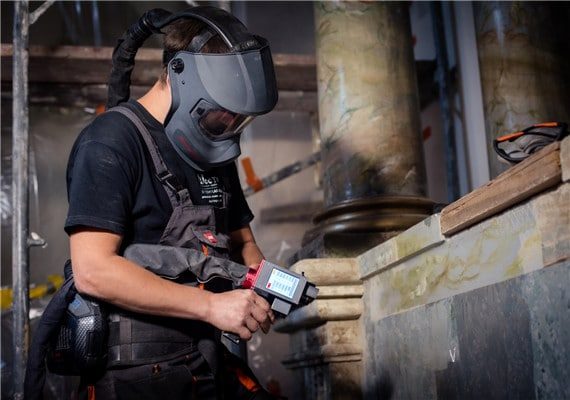
With years of experience in laser cleaning technology, we have honed our expertise to provide cutting-edge solutions tailored to your unique needs. Our team of skilled engineers and technicians has the in-depth knowledge to ensure you get the perfect laser cleaning machine for your specific application.
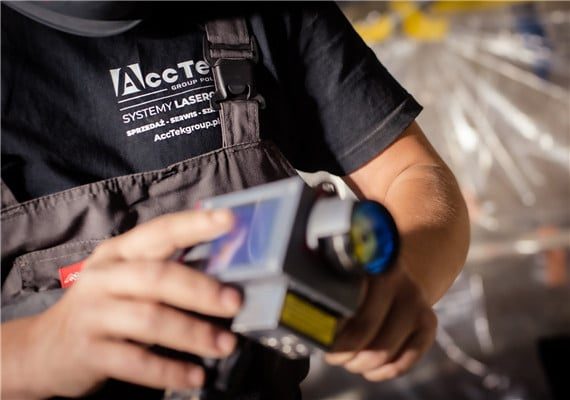
At AccTek Laser, we build strong relationships with our clients. Our dedicated support team provides prompt assistance and after-sales service to keep your laser cleaning machine running at its best for years to come. Your satisfaction is our top priority and we will help you every step of the way.
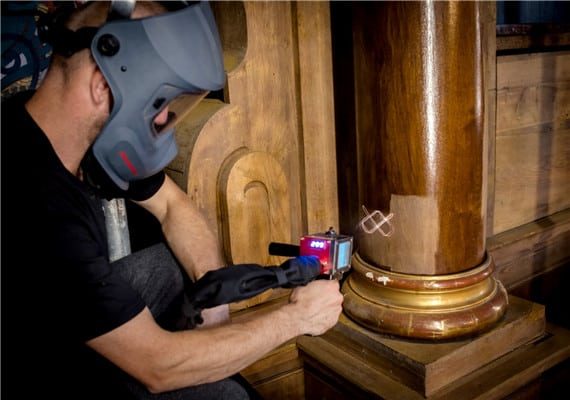
Quality is the cornerstone of our manufacturing process. Every laser cleaning machine is rigorously tested and adhered to strict quality control standards, ensuring that the product you receive meets the highest industry benchmarks. Our dedication to quality ensures you get a machine that performs consistently and delivers perfect cleans every time.
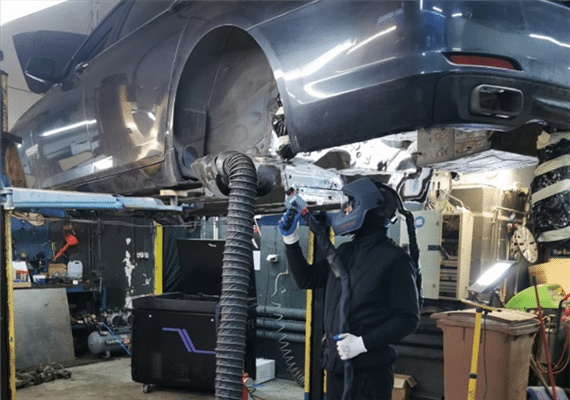
We understand the importance of cost efficiency in today’s competitive landscape. Our laser cleaning machines can provide excellent value for your investment, minimizing downtime and reducing operating costs while maximizing productivity and efficiency.
4 reviews for 100W Pulse Laser Cleaning Machine
Themba –
Streamlines cleaning processes with precision. Saves time and effort. A valuable addition to any production line. Boosts productivity.
Ruth –
Impressive pulse laser cleaning machine. Efficiently removes rust and contaminants. Essential for industrial maintenance tasks. Highly recommended for workshops.
Benjamin –
Revolutionizes surface preparation. Delivers consistent results. Makes tough cleaning tasks effortless. Essential for maintaining equipment and surfaces.
Diya –
Exceptional cleaning power. A versatile tool for various industries. Enhances safety and efficiency in operations. Exceeds expectations.